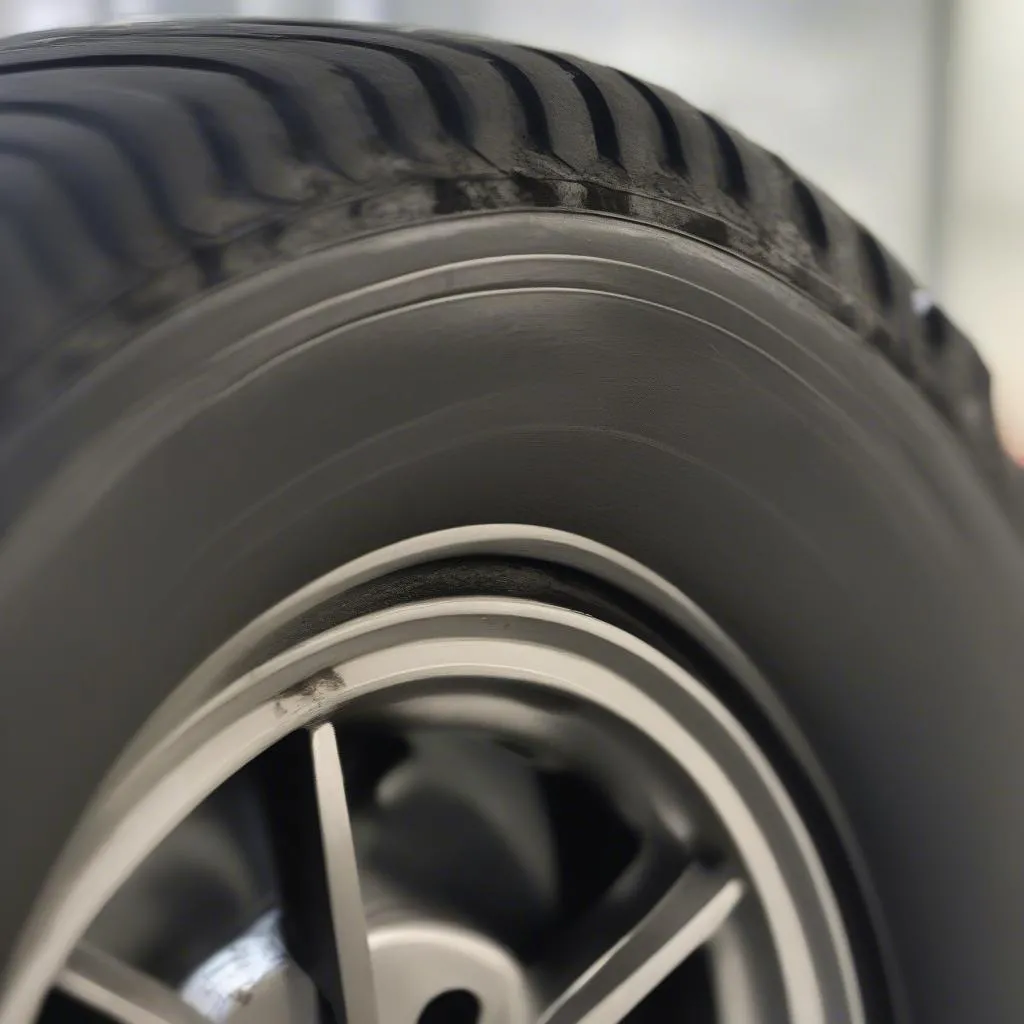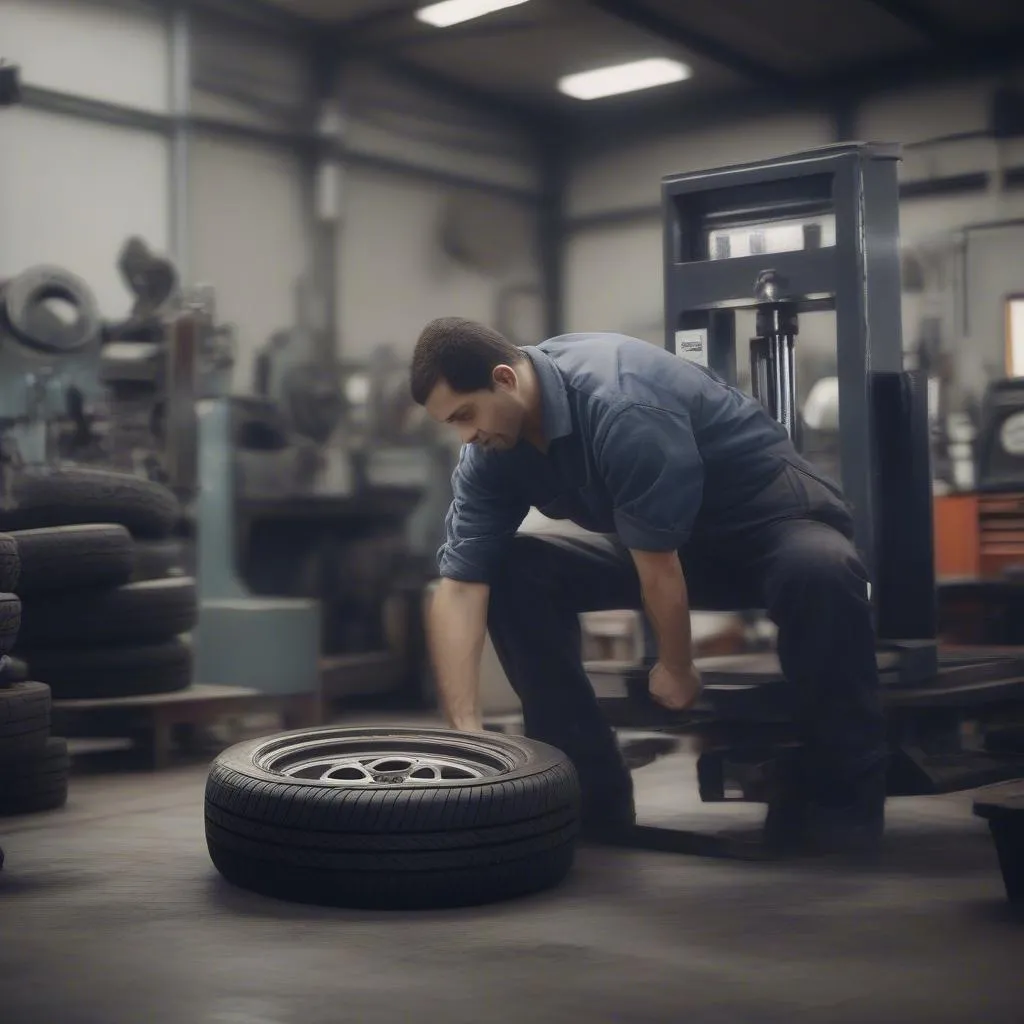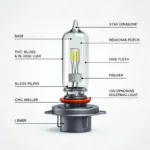You know the feeling: your car vibrates, the steering wheel shakes, and on the highway, it feels like you’re riding a bucking bronco? This could be a sign of “Wheel Imbalance.” But don’t worry, we’ll explain what it is, how it happens, and how to get rid of it.
What Exactly Does “Wheel Imbalance” Mean?
Imagine throwing an irregularly shaped stone into water. It will likely tumble and splash instead of flying straight. A tire with imbalance behaves similarly. It doesn’t roll smoothly but wobbles, causing vibrations that transfer throughout the entire vehicle.
 Diagram showing tire imbalance
Diagram showing tire imbalance
Where Does This Imbalance Come From?
Wheel imbalance can have various causes:
- Manufacturing defects: Even during production, minor deviations in the tire or rim structure can occur.
- Wear and tear: Through abrasion, hitting curbs, or potholes, the weight distribution in the tire can change.
- Repairs: After a tire repair or replacement, the tire must be rebalanced.
Why Is Wheel Balancing So Important?
Imbalance might seem harmless at first but can have serious consequences:
- Safety: Vibrations in the steering wheel impair vehicle control.
- Driving comfort: Driving becomes noisy and uncomfortable.
- Wear: Tires, rims, suspension, and steering are excessively stressed and wear out faster.
How Do You Know If Your Wheels Are Unbalanced?
Besides the vibrations already mentioned, there are other signs of imbalance:
- Uneven tire wear
- Knocking or rattling noises while driving
- Increased fuel consumption
What Can You Do About Wheel Imbalance?
Fortunately, the solution is quite simple: Wheel balancing! This involves attaching small weights to the rim to restore the weight distribution.
“It’s astonishing how much influence a few grams can have on driving behavior,” says Dr. Ing. Hans Müller, Head of Chassis Development at a well-known German car manufacturer. “Wheel balancing is a small measure with a big impact that every driver should have done regularly.”
 Close-up of a wheel balancing machine
Close-up of a wheel balancing machine
When Should You Have Your Wheels Balanced?
- After every tire change
- After a tire repair
- If you notice vibrations in the vehicle
- Preventatively every 10,000 to 15,000 kilometers (approx. 6,000 to 9,000 miles)
Where Can You Have Your Wheels Balanced?
Wheel balancing is a routine procedure that any car workshop can perform.
Conclusion: For a Safe and Comfortable Driving Experience
Wheel imbalance is a common problem that can be easily fixed. Don’t ignore the signs; instead, have your wheels balanced regularly. This way, you’ll drive safer, more comfortably, and protect your vehicle at the same time.
More Questions About Wheel Imbalance?
- How much does wheel balancing cost?
- Can you fix wheel imbalance yourself?
- What types of balancing machines are there?
More information on these and other car repair topics can be found on our website autorepairaid.com.
Need Help With Your Car Repair?
Our car repair experts are available 24/7. Contact us now!

